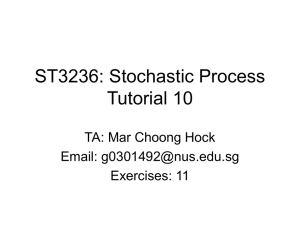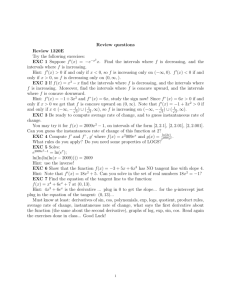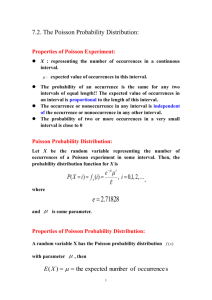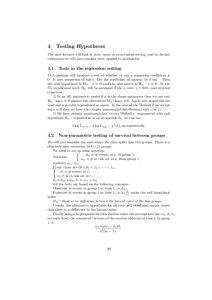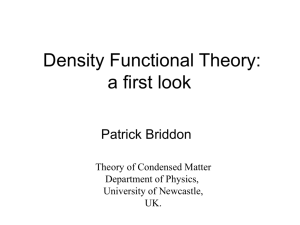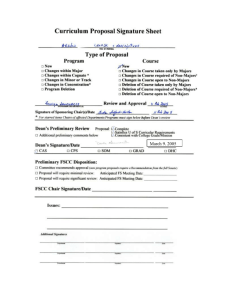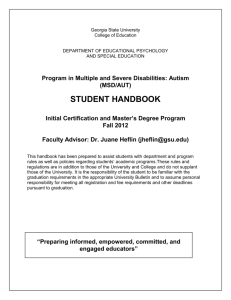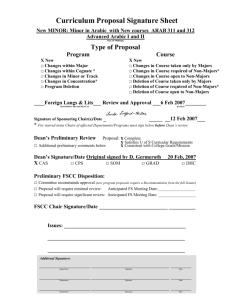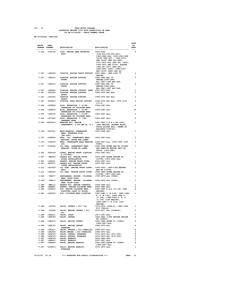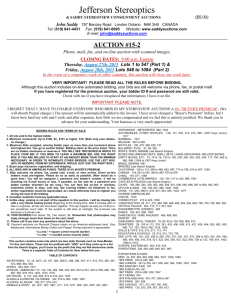risk theory and insu..
advertisement
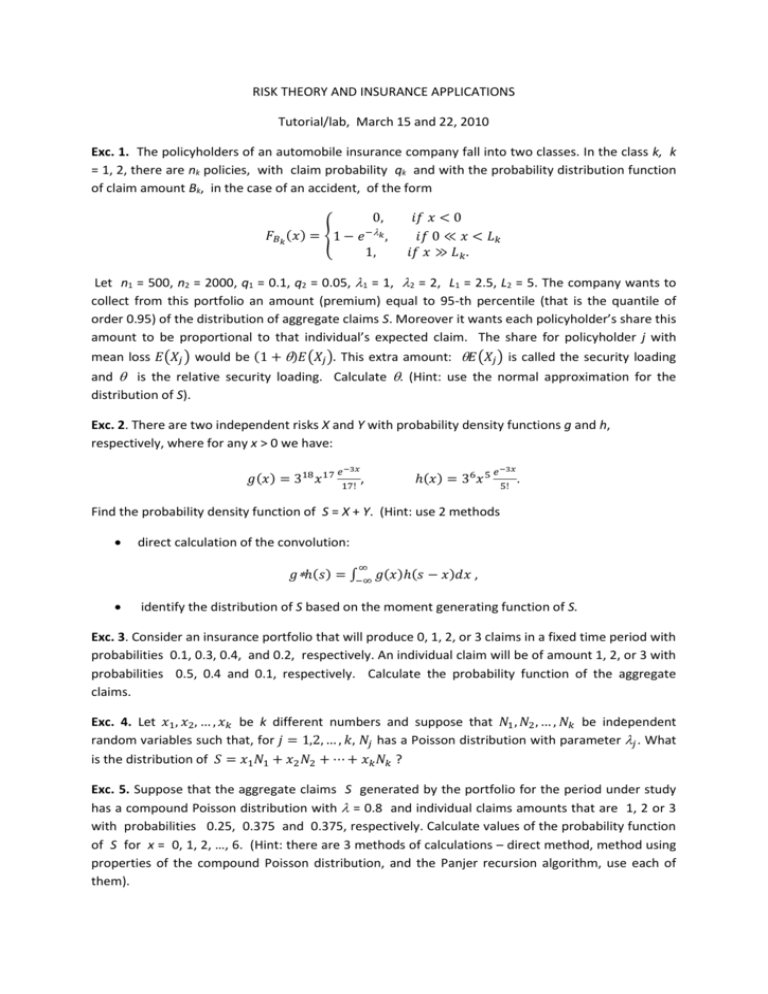
RISK THEORY AND INSURANCE APPLICATIONS
Tutorial/lab, March 15 and 22, 2010
Exc. 1. The policyholders of an automobile insurance company fall into two classes. In the class k, k
= 1, 2, there are nk policies, with claim probability qk and with the probability distribution function
of claim amount Bk, in the case of an accident, of the form
0,
𝐹𝐵𝑘 (𝑥) = {1 − 𝑒 −𝑘 ,
1,
𝑖𝑓 𝑥 < 0
𝑖𝑓 0 ≪ 𝑥 < 𝐿𝑘
𝑖𝑓 𝑥 ≫ 𝐿𝑘 .
Let n1 = 500, n2 = 2000, q1 = 0.1, q2 = 0.05, 1 = 1, 2 = 2, L1 = 2.5, L2 = 5. The company wants to
collect from this portfolio an amount (premium) equal to 95-th percentile (that is the quantile of
order 0.95) of the distribution of aggregate claims S. Moreover it wants each policyholder’s share this
amount to be proportional to that individual’s expected claim. The share for policyholder j with
mean loss 𝐸(𝑋𝑗 ) would be (1 + )𝐸(𝑋𝑗 ). This extra amount: 𝐸(𝑋𝑗 ) is called the security loading
and is the relative security loading. Calculate . (Hint: use the normal approximation for the
distribution of S).
Exc. 2. There are two independent risks X and Y with probability density functions g and h,
respectively, where for any x > 0 we have:
𝑔(𝑥) = 318 𝑥 17
𝑒 −3𝑥
,
17!
ℎ(𝑥) = 36 𝑥 5
𝑒 −3𝑥
.
5!
Find the probability density function of S = X + Y. (Hint: use 2 methods
direct calculation of the convolution:
∞
𝑔ℎ(𝑠) = ∫−∞ 𝑔(𝑥)ℎ(𝑠 − 𝑥)𝑑𝑥 ,
identify the distribution of S based on the moment generating function of S.
Exc. 3. Consider an insurance portfolio that will produce 0, 1, 2, or 3 claims in a fixed time period with
probabilities 0.1, 0.3, 0.4, and 0.2, respectively. An individual claim will be of amount 1, 2, or 3 with
probabilities 0.5, 0.4 and 0.1, respectively. Calculate the probability function of the aggregate
claims.
Exc. 4. Let 𝑥1 , 𝑥2 , … , 𝑥𝑘 be k different numbers and suppose that 𝑁1 , 𝑁2 , … , 𝑁𝑘 be independent
random variables such that, for 𝑗 = 1,2, … , 𝑘, 𝑁𝑗 has a Poisson distribution with parameter 𝑗 . What
is the distribution of 𝑆 = 𝑥1 𝑁1 + 𝑥2 𝑁2 + ⋯ + 𝑥𝑘 𝑁𝑘 ?
Exc. 5. Suppose that the aggregate claims S generated by the portfolio for the period under study
has a compound Poisson distribution with = 0.8 and individual claims amounts that are 1, 2 or 3
with probabilities 0.25, 0.375 and 0.375, respectively. Calculate values of the probability function
of S for x = 0, 1, 2, …, 6. (Hint: there are 3 methods of calculations – direct method, method using
properties of the compound Poisson distribution, and the Panjer recursion algorithm, use each of
them).
Exc. 6. Suppose that the number of accidents generated by an insured driver in a single year has a
Poisson distribution with parameter . If an accident happens the probability is p that the damage
amount will exceed a deductible amount. On the assumption that the number of accidents is
independent of the severity of the accidents, derive the distribution of the number of accidents that
result in a claim payment.
Exc. 7. Suppose that S1 has a compound Poisson distribution with Poisson parameter = 2 and claim
amounts that are 1, 2 of 3 with probabilities 0.2, 0.6 and 0.2 respectively. Additionally S2 has a
compound Poisson distribution with Poisson parameter = 6 and claim amounts that are either 3 or
4 with probability 0.5 each. Suppose that S1, S2 are independent risks. What is the distribution of 𝑆 =
𝑆1 + 𝑆2 ?
Exc. 8. Suppose that S has a compound Poisson distribution with = 2 and 𝑓(𝑥) = 0.1𝑥, 𝑥 =
1, 2, 3, 4. Calculate values of the probability function of S for x = 0, 1, 2,3,4.


